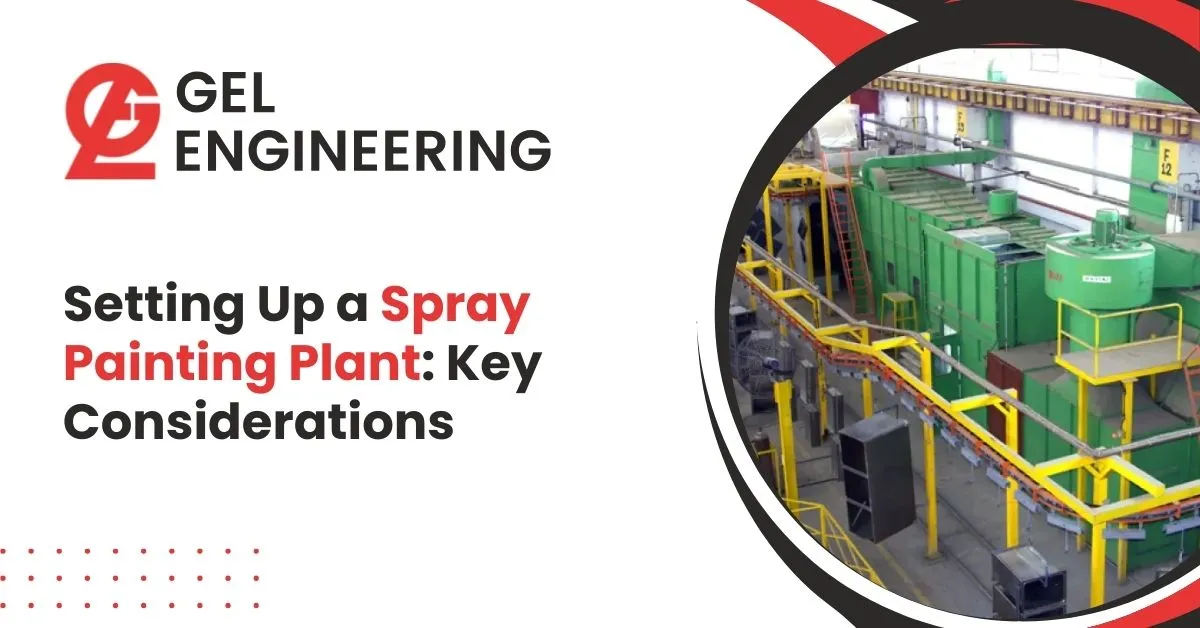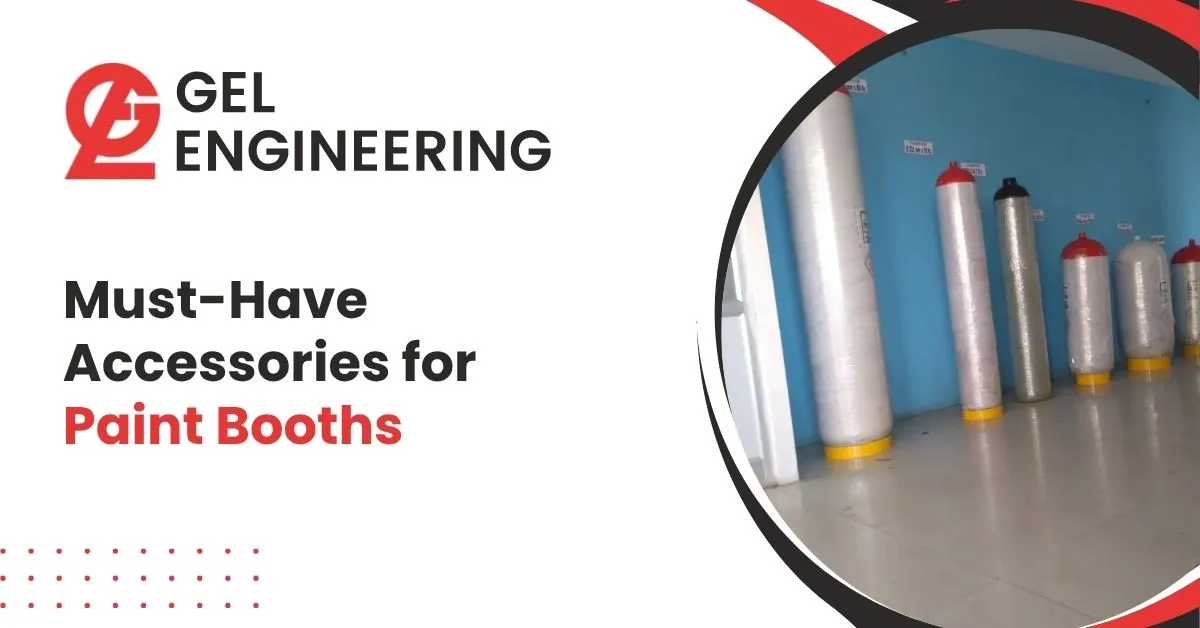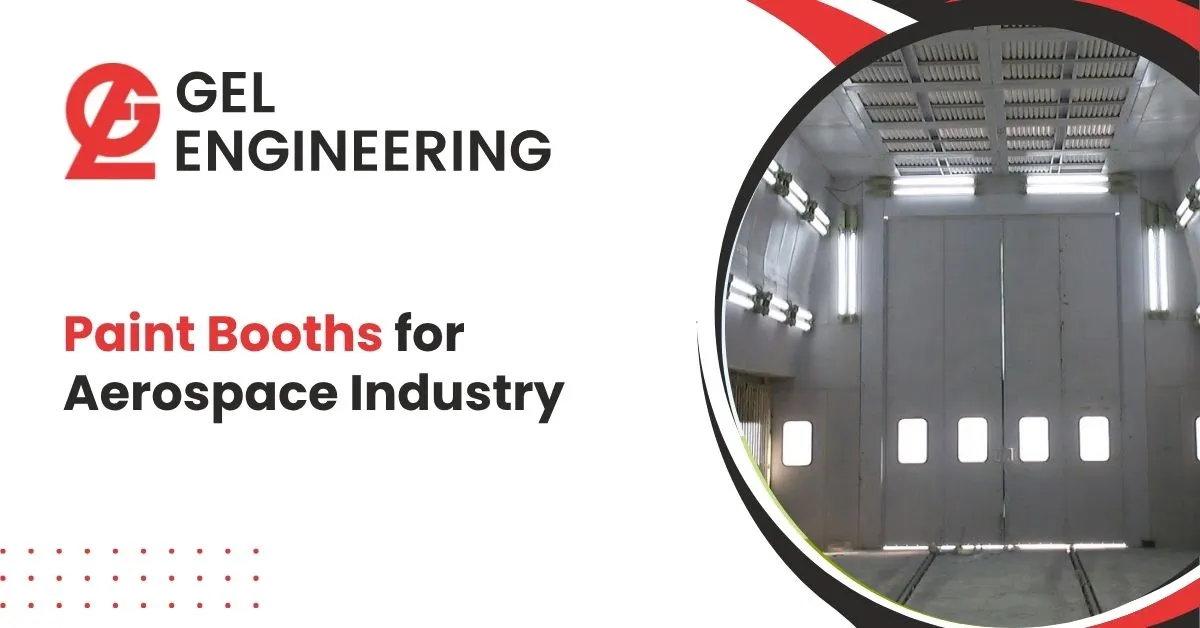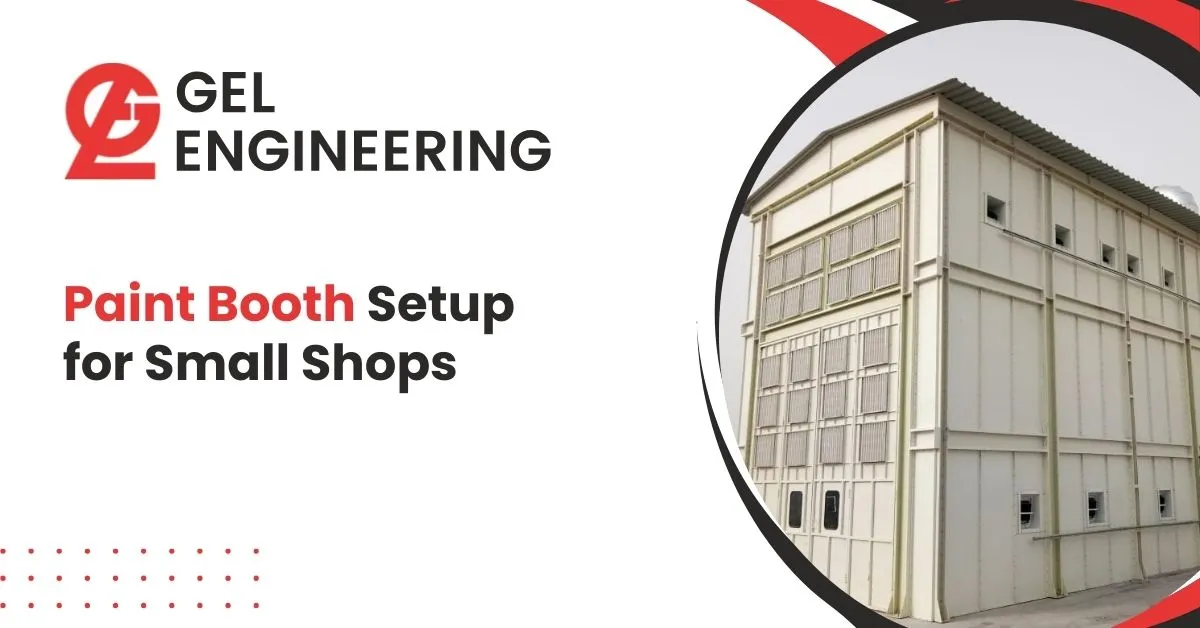Enhance Performance, Safety & Efficiency in Your Spray Painting Process When it comes to industrial…

Setting up a spray painting plant requires more than just equipment installation. It demands careful planning of layout, air quality control, safety systems, and compliance with environmental standards. Whether you’re a manufacturer expanding your capabilities or a startup entering surface finishing, understanding these foundational elements is critical to operational success.
Table of Contents
1. Plant Layout & Workflow Efficiency
One of the most critical steps in setting up a spray painting plant is optimizing the layout for smooth material flow and minimal bottlenecks. The layout should support:
- Pre-treatment to drying seamless transition
- Segregation of clean and contaminated zones
- Ergonomic workstation design for operators
- Efficient space utilization for batch or conveyor-based operations
2. Ventilation and Airflow Design
Proper air circulation and filtered airflow are essential to maintain coating quality and ensure operator safety. A well-ventilated system reduces overspray, manages solvent fumes, and minimizes health hazards.
Key Components:
- Fresh Air Inlet Systems
- Exhaust Filtration Units
- Temperature and Humidity Control
3. Equipment Selection Based on Coating Needs
The type of coating—powder, solvent-based, or water-based—determines the equipment you need. Gel Engineering provides:
- Spray Painting Booths (Dry or Wet Type)
- Powder Coating Booths
- Paint Circulation Systems
- High-Performance Spray Guns and Pumps
Our engineering team tailors each solution based on your production volume, product dimensions, and coating specifications.
4. Surface Pre-Treatment Systems
Surface pre-treatment ensures paint adhesion and finish durability. Depending on the material (steel, aluminum, etc.), choose between:
- Phosphating or Chromating Lines
- Dip Type or Spray Tunnel Pre-Treatment
- Hot Water Rinse, De-rusting & De-greasing Units
These steps enhance corrosion resistance and longevity of the final product.
Ready to Set Up Your Spray Painting Plant? Contact Us for Expert Guidance Today!
5. Safety & Environmental Compliance
A professionally designed paint shop must comply with local environmental and fire safety regulations. Consider:
- Fire suppression systems and explosion-proof electricals
- Proper solvent storage and waste disposal systems
- Operator safety gear and training
- VOC (Volatile Organic Compounds) control measures
6. Drying and Curing Systems
The quality of the paint finish depends heavily on controlled drying. Gel Engineering offers:
- Electric or Gas-Fired Ovens
- IR Heaters for Spot Curing
- Continuous Curing Tunnels
These are customized for your plant size, energy source, and throughput needs.
7. Automation & Control Integration
Modern spray painting plants benefit from automation to enhance consistency, speed, and quality. From programmable conveyor systems to temperature and humidity sensors—automation brings efficiency to your paint shop operations.
8. Energy Efficiency & Sustainability
With rising energy costs and environmental concerns, setting up an energy-efficient plant is a smart move. Our designs emphasize:
- Low energy consumption ovens
- Reusable air filtration
- Water recycling in pre-treatment lines
- VOC emission controls
Frequently Asked Questions
What are the conditions for spray painting?
Spray painting should be done in a well-ventilated, dust-free area with controlled temperature and humidity. Ideal conditions include 20–25°C temperature and low moisture to ensure smooth application and drying.
What are the safety requirements for spray painting?
Use proper PPE like masks, gloves, and goggles to protect from fumes and overspray. Ensure the workspace has proper ventilation and follow fire safety protocols to avoid risks from flammable materials.
How do you prepare for spray painting?
Clean and dry the surface thoroughly, sand if needed, and apply primer for better adhesion. Cover surrounding areas to prevent overspray and ensure the equipment is in proper working condition.
What is the procedure of spray painting?
Start with surface prep, apply primer, then spray paint in even, overlapping strokes. Allow each coat to dry before applying the next, and finish with a topcoat if needed for protection and finish.
Conclusion
Setting up a spray painting plant is a complex engineering process that impacts both product quality and operational efficiency. A well-planned system minimizes waste, ensures safety, and meets production goals without compromising compliance.
At Gel Engineering, we offer end-to-end design, manufacturing, and installation of spray painting plants tailored to your industry. From layout design to commissioning, we ensure you start strong and scale efficiently.
Ready to set up your spray painting plant? Contact Gel Engineering today for turnkey solutions tailored to your needs!




